The Secrets to Healthy Aging
Dr. Sally LaMont is a licensed naturopathic doctor (ND), acupuncturist (LAc), educator and cook and sees patients at the Marin Natural Medicine Clinic in Larkspur, California.There, she focuses on healthy aging, digestive issues, metabolic and hormonal imbalances, pre-diabetes, and dementia through personalized natural treatment plans that address the root cause.
Dr. Sally also created www.drsallyskitchen.com for her patients and the public to share strategies and recipes to beat chronic disease, using food as medicine. She earned her Naturopathic Medicine degree in 1981 from the National University of Natural Medicine and her Master of Science in Oriental Medicine in 1986 at Emperor’s College of Traditional Chinese Medicine.
As prior Executive Director of the California Naturopathic Doctors Association, Dr. Sally led the successful campaign to license NDs in California, granting 38 million people access to natural health care. She was awarded Physician of the Year in 2001 by the American Association of Naturopathic Physicians for her work.
In today’s interview, we discuss what she’s discovered are the real Secrets (her 4 pillars) to Healthy Aging. We also discuss how to address the root causes behind America’s Silent Epidemic of Chronic Disease. Dr. Sally is a picture of healthy aging herself and she is a wealth of information, so please enjoy this interview.
To learn more about Dr. Sally LaMont :
Website: https://www.drsallyskitchen.com/
Social Media Links:
https://www.linkedin.com/in/dr-sally-lamont-nd-lac-592a037/
https://www.facebook.com/drsallyskitchen/
https://www.healthyagingreset.com/10-healthy-aging-hacks-fba
Description of Free Gift or Offer:
eBook: 10 Healthy Aging Hacks You Can Use Today
The Secrets to Healthy Aging
Dr. Trevor Cates: Hi there. Welcome to The Spa Dr. Podcast. I am Dr. Trevor Cates. Today we are talking about the secrets to healthy aging. We are all getting older every day and so there’s no turning back the clock, but there are certainly things that we can do to have graceful aging, healthy aging as the years go by. So my guest is Dr. Sally Lamont. She is a licensed naturopathic doctor, acupuncturist, educator, and cook and sees patients in the Marin natural medicine clinic in Larkspur, California. There, she focuses on healthy aging, digestive issues, metabolic and hormonal imbalances, pre-diabetes and dementia through personalized natural treatment plans that address the root cause. Dr. Sally has also created drsallyskitchen.com for her patients and the public to share strategies and recipes to beat chronic disease using food as medicine. Dr. Sally earned her naturopathic medicine degree in 1981 from the National University of Natural Medicine.
Dr. Trevor Cates: That is where I went to school as well. She was just there way before me and her Master Of Science in Oriental medicine in 1986 at Emperor’s College of Traditional Chinese medicine. As prior Executive Director of the California Naturopathic Doctors association, Dr. Sally led the successful campaign to license Naturopathic Doctors in California, granting 38 million people access to natural healthcare. As a result of this, she was awarded Physician of the year in 2001 by the American Association of Naturopathic Physicians for her work and I was there. I saw it all happening. I was there when the licensure passed, and all the work that Dr. Sally did, so I truly appreciate her and I’m excited to have her on the podcast. In today’s interview, we discuss what she has discovered are the real secrets, her four pillars to healthy aging. We also discuss how to address the root causes behind America’s silent epidemic of chronic disease. Dr. Sally is a picture of healthy aging herself as well as a wealth of information, so please enjoy this interview. Sally, it’s so great to have you on The Spa Dr. Podcast. Welcome.
Dr. Sally LaMont: Thank you. It’s great to be here.
Dr. Trevor Cates: So Sally, we’ve known each other for a while, and when I lived in California, you were so instrumental and helping the licensure, get passed for the Naturopathic Doctors in California. You were so actively involved and I really, really appreciate all the work you did in making that happen. And I mean if it weren’t for you, I wouldn’t have been the first woman licensed as a Naturopathic Doctor in California and I wouldn’t have been appointed by former Governor Schwarzenegger. It’s the Naturopathic advisory council because it wouldn’t have existed if you had not been doing all of that work. So thank you.
Dr. Sally LaMont: You are so welcome. It was really, one of the most incredible experiences of my life to get to go to the legislature and tell them about the value of Naturopathic Medicine and most importantly, getting them to change. So change is possible and we are here now to serve not only the, almost 40 million Californians but the rest of the country.
Dr. Trevor Cates: Yes, absolutely. When was that, when we were involved in that and that licensure passed. Do you recall what year that was?
Dr. Sally LaMont: Yes. The bill was passed on September 9th of 2003 and the first licenses were issued at the beginning of 2005. So it’s been 15 years now.
Dr. Trevor Cates: Oh, I can’t believe that time has been flying. Right. And you have been in practice for a long time. You’ve been seeing patients for quite a while. You graduated Naturopathic school a while back. You have a lot of experience seeing patients and seeing trends in disease and health and wellness and illness in your patients. So what are some of the things that you’re noticing over the years?
Dr. Sally LaMont: Well, I have noticed that especially over the last 15 years, people seem to be getting sicker with more complex chronic disease than ever. It used to be that people would come in for digestive problems or headaches or PMS. And now we are seeing multiple layers of complex chronic disease and that’s really become the focus of my practice. You know, we’re in the midst of a chronic disease epidemic in the United States. We have, according to the centers for disease control in Atlanta, six in 10 Americans have one chronic disease, and another 40% have two or more. And by chronic disease, I mean heart disease, hypertension, stroke, diabetes, cancer, dementia and lung and kidney disease. And it is a nightmare and it’s bankrupting our country. I mean, 30% of Americans have diabetes and another 40% are pre-diabetic. And as you know, most people don’t even know that. 40% of us are obese and 30% are overweight. And that’s so closely parallels the diabetes epidemic. And, you know, heart disease is out of control. It affects 122 million or about a third of Americans and 840,000 Americans die every year of heart disease. So the thing that really gets me is that it does not have to be this way. According to the CDC and the American heart association and the American Diabetes association and so on. These diseases are preventable and reversible in their early stages, but we just ignore that and let the decades roll by. And by the time we get into our 50s and 60s these diseases are manifesting. And the other thing that drives me crazy is that it is literally bankrupting our country. We spend $3 trillion dollars every year just managing the chronic disease epidemic. I think it is because we have been applying the acute crisis model of medicine to the chronic disease epidemic. But the cause of the chronic disease epidemic is really lifestyle. So you know, as Naturopathic doctors, we were trained to promote health and trained to appreciate and support our body’s own healing capacities. We have such a respect for the healing power of nature. And so my practice is really about waking people up to the power that they have to take charge of their health and turn this nightmare of chronic disease around.
Dr. Trevor Cates: Yes, and so important. That is why I wanted to have you on the podcast stage to talk about these solutions and what people can do. Do you think that, I mean we’ve got this baby boomer population that’s aging. Is that part of the reason, do you think for the increase in these chronic diseases?
Dr. Sally LaMont: Yes. I think it is decades of living out of alignment with the rhythm of nature that has really produced this. Our food supply is nothing like what our ancestors ate. It’s so refined and processed that no doubt food is at the core of it. But our sedentary lifestyle really promotes diabetes. It contributes to the dulling of the insulin receptors on the cells and creates what we call insulin resistance and all the sugar and refined and processed junk that we eat ends up getting stored as fat. Fat is an inflammatory compound that fuels heart disease, diabetes, definitely dementia, cancer. So it is time and lifestyle combined. And you know, what really gets me is it is not just the 40 and 50 and 60 year olds that are succumbing to this, but the highest incidents of diagnosis of chronic disease is happening in the millennials at age 28. We are seeing more young people diagnosed with these, what used to be considered the diseases of aging. So it is never too early to get started on making these kinds of lifestyle changes.
Dr. Trevor Cates: Yes. And you know it does seem that a lot of people will say, Oh, well I am not feeling as well, or I have these problems because I’m getting old. And Sally, you are just such a great representation of optimal health and graceful aging. And you obviously you walk the talk of what you do. So it’s fantastic to see that. So let’s talk about more of the root causes, the underlying causes Naturopathic doctors that we always talk about this. What are some of the big ones that you think that we need to address?
Dr. Sally LaMont: Well, I think right off the bat is inflammation. So there is acute inflammation and chronic inflammation and acute inflammation is a good thing. If you cut yourself, you want the immune response to be peaked, to send trillions of cells to help heal that area. You know, inflammation is characterized by redness, swelling, pain. And that is okay in the short run. But the problem is that our lifestyles are promoting chronic inflammation. So we have this smoldering fire and a lot of it lives in our fat cells. And you know, of course that shows up on our faces as acne and rosacea. So the skin really is, you know, as you know, our largest organ of elimination and it is part of the battleground of inflammation. So doing an anti-inflammatory diet, moving our bodies, getting adequate rest, and then using natural anti-inflammatories and in food, things like turmeric are very powerful at quelling those fires of chronic inflammation that fuel the chronic disease epidemic. Another huge driver is the blood sugar dysregulation that we have. You know, we have been trained since children to crave sugar, to want to eat, you know, cereals and cookies and pies and cakes and donuts, croissants, scones and chips and candy and soda and all of that. It alters our body’s natural way of utilizing sugar. And it ends up getting stored as fat and promoting what I mentioned earlier. Insulin resistance and then we go on to develop diabetes. I am sure you see it in your practice, but so many people are walking around with rising blood sugar levels. They don’t know it. You can’t really feel it unless you step back and look at the blood sugar roller coaster that you might be on, you know, where you have coffee and a pastry for breakfast and feel jacked up and great for a couple of hours. And then because there is no real nutritional value to that food very shortly, the blood sugar levels crash and people feel anxious and irritable and start craving sugar again. So, that is a big root cause driver of the chronic disease epidemic.
Dr. Trevor Cates: With blood sugar imbalance, I think a lot of times I see people that even eat a seemingly healthy diet that say I don’t actually eat a lot of sweets. They still could be pre-diabetic or moving in that direction. Because there is so many places that sugar is hidden or that relate to increasing our blood sugar. And most people, even if they are not eating a lot of sweets, most people don’t eat enough fiber and other nutrients that help with blood sugar regulation.
Dr. Sally LaMont: It is so true. So I think it comes down to integrating a lot more fruits and vegetables into our diet. I mean I am a proponent of the seven to 11 servings a day and that’s what the USDA recommends. But very small percentage of Americans actually get that. And the thing I love about all of the vegetables and fruits is, like you said, they’re high in fiber, but the sugar that’s in them is embedded in that fiber and it takes a lot of energy for the body to digest and release that sugar. So the blood sugar rises way more slowly and falls more slowly, you know, breaking that cycle and, allowing the body to stay in balance. The other thing I love about veggies and fruits is that they’ve got so many phyto nutrients that are actually made by the plant as a protective mechanism from things like drought and insect and too much rain all are stressors for the plant. And then the plant has developed the ability to protect itself by putting these chemicals in that are these brightly colored pigments. They talk to our genes. These pigments are something that ourselves developed a relationship with over hundreds of thousands of years. And so when we integrate these foods into our body, they actually instruct our body’s genes to perform properly. And when we’re having refined and processed foods, we miss out on a whole range of plant compounds beyond vitamins and minerals that reduce inflammation and have a protective effect on our cells too.
Dr. Trevor Cates: Right? And one thing I hear people say is, Oh, I don’t really like vegetables that much. So I drink my vegetables, my fruits and vegetables. And problem with that is that you’re missing fiber, right? So it is important. I think that fresh vegetable juice or fresh fruit juice can be a good part of the diet too, but don’t just rely upon that. Right? It is important to actually find a way to get those fruits and vegetables in your diet. Okay. And so you also going to talk about hormonal issues being a root cause too?
Dr. Sally LaMont: Yes, I see it as that, but so many people have low thyroid function and they are unaware of it. Hypothyroidism is very common and it’s characterized by fatigue. One of the most common complaints we have weight gain. Just a whole list of metabolic deficiencies. So we need to have our thyroid checked. We need to have our adrenal function checked. The level of stress that we have today is enormous. And at first our cortisol levels rise, but over time they fall and we slip into almost a hypo adrenal state. So, like you, I am a big fan of checking not only the thyroid and the adrenal glands, but our sex, steroid hormones, estrogen, progesterone, testosterone, especially as we age. I am a fan of bio-identical hormone replacement therapy. If it is right and safe for that individual, it allows proper sexual function, but also for women in their fifties and sixties to be able to sleep and not be plagued by constant night sweats and hot flashes and brain fog. That is so common today. Another one of the big drivers that really traces right back to food is our nutritional deficiencies. So many people are deficient in a range of nutrients and we don’t often think that the food we eat is actually carrying all these vital nutrients that promote optimal metabolism, but they are. So if we are not eating enough healthy vegetables and fruits, we may not get enough chromium. And chromium is a mineral that lies right at the heart of insulin that compounded a hormone made by the pancreas to clear sugar from the bloodstream. So we need essential nutrients like chromium, and zinc. And Magnesium is the most common mineral deficiency that we have. And when we don’t have enough magnesium, we are stressed and we’re constipated and we can’t sleep. So I love instructing people to eat dark leafy green vegetables, which are really rich in magnesium and maybe take a little powdered magnesium at bedtime before they go to sleep to help them rest and get a good night’s sleep.
Dr. Trevor Cates: Yes, those are all really important nutrients. And I think that is it that people just aren’t getting the magnesium in their diets, so it is such a common deficiency or is it some other reason that we are not maybe absorbing the magnesium?
Dr. Sally LaMont: Well, both are true. We are not eating enough dark leafy greens and nuts and seeds, those are the largest magnesium containing foods and in all of the blue zones around the world, those areas that have been studied for longevity, they are a part of every single of the blue zone diets. So we aren’t ingesting enough of them in the first place, but another one on my list of drivers of chronic disease. is digestive dysfunction and that relates to the absorption of those nutrients. We have really kind of wrecked our gut microbiome by so many antibiotics, whether we have taken them ourselves for colds and flu when they were not necessary or the amount of antibiotics that is in our food supply and agriculture. Either way you cut it, our microbiomes have been pretty devastated. And then we have developed through this highly processed and refined diet, something called the leaky gut or intestinal hyper permeability, which is a lot of unwanted compounds across the gut lining into the bloodstream where the immune system then looks at partially undigested wheat or dairy or corn. And the immune system responds to the presence of those partially undigested foods as foreign invaders and makes an antibody. So, we end up compounding the problem with food sensitivities, food allergies, and that is going to show up on the face too as an inflammatory response. So I think that’s a really big one, is getting the gut healed. And then really playing off of that is my sixth and final drivers. And the root cause drivers of chronic disease, and that is toxicity. And this is not something that people even thought about 50 or a hundred years ago. But during this time our crafty little petrochemical business has been cranking out at least 80,000 different compounds that are basically have not been tested and certainly not in relationships to each other. So at this point, our food, our water, our air has been contaminated with a range of petrochemical toxins, heavy metals, pesticides, herbicides. But along with toxicity, also lies infections like Lyme disease or overgrowth of mold, mycotoxins in the bloodstream, chronic viral infections. So we really need to get to work, cleaning up our food supply so that when we try to eat clean, healthy food, we are not accidentally eating and drinking a range of toxins that put a monkey wrench into our body’s detoxification capacities when we are not detoxifying, it also shows up on our skin.
Dr. Trevor Cates: Yes absolutely. And, and all of these really tie together. I mean, if you have toxicity that is going to impact your hormonal balance. If you have nutritional deficiencies. Often times you have digestive issues that create nutritional deficiencies. Nutritional deficiencies also lead to blood sugar regulation and hormonal imbalances. A lot of it ties back to inflammation. So all of these things are interconnected. So, with the solution to addressing these, you can really help address a lot of the root causes with your approach. Right?
Dr. Sally LaMont: Absolutely. In fact, I think this might be a fun time to share what I think of are the secrets of healthy aging and one of the first one is to wake up and recognize that we hold the power to change our health. Our bodies are incredibly resilient and have been over the course of millions of years coming to the point where humans developed and we’ve got at least 11 organ systems that are working together to keep us in perfect harmony. And we do not manage our body as though we’re in charge of one of the most sophisticated organisms on the planet. But the truth is that we are, and we hold the power to change our health. We do not have to be a passive recipient of healthcare, but we need to be an active participant. So I have actually created an online course for everyone called the healthy aging reset and although we might think it’s for boomers and those in their fifties, honestly, everyone can benefit by starting to understand some of these basic ways that we can own our own health and take a more active role in it. I like to teach my students and my patients to think like a Naturopathic doctor or a functional medicine doctor and look for the root causes in their conditions. That is why I like to run through those six drivers of chronic disease. So we can become educated when we go to a doctor. We want to be able to help lead the discussion, come in as an informed person who understands that self care is critical to overcoming chronic disease because we have not done that. We have kind of become subservient to here’s the pill that will fix this problem. Make it look like it goes away. So I want to say one of the second secrets to healthy aging is to understand the true meaning of symptoms. We have been kind of trained to think of symptoms as an annoying thing that we just want to look for a pill to make that go away. But the truth is that symptoms are a sign that something is out of balance in our body and they are really a message from our body to our mind that something needs to change. I think that symptoms are the body’s way of speaking to us in the only language it can, which is symptoms. So your body might be telling your stomach, let’s say, might be telling you that that extra double espresso you had isn’t working, would be to have heartburn or for someone else, it might be diarrhea for someone else, it might be palpitations from the caffeine. Or kidney stones from getting dehydrated from drinking coffee, or rosacea. So, symptoms are not something that we just want to make go away, but instead to kind of compassionately sit back and listen to our body and treat it with kindness instead of, how can I make this go away right now so I can get back to what I was doing.
Dr. Trevor Cates: So learning what it is trying to tell you? Because I think we’re so quick to take Tylenol, Advil, or you know, maybe an antibiotic or something along those lines. And instead looking at what can we do to support our bodies and address the root causes. Like you’re talking about using natural substances and food is great medicine too.
Dr. Sally LaMont: Food is really honestly where it starts. I want to just conclude with these ideas of the secret to healthy aging. And that is that a lot of this has to do with our mindset. We have a tendency and you know, it’s like, Oh, I’m turning 30 now. You know, I’m starting to get old. And with each decade that voice gets louder that oh, I’m old now and I hear people who are 50, I think like it’s the beginning of the end. And that is just not true. Studies have been done. In fact, a study at Yale that tracks 660 people over 20 years, they found that thinking positively about getting older can extend your life span for another seven and a half years and that was counting for things like gender and wealth and overall health. If you see the glass half full, your body is going to respond. And just that positive attitude about aging has a greater effect than low cholesterol, low body weight, not smoking. So I want to encourage everyone to shift your identity as you move through time from getting to be old and stopping doing the things that promote health to embracing the opportunity that aging provides. I mean, we do learn a thing or two along the way. We do become more confident. We do understand the way the world works better and if we keep doing the things that build health, honestly people can grow more healthy through time because our body is resilient, it wants to thrive. And if we can understand and keep our eye on the ball and address those drivers of chronic disease as they come up and embrace, supporting our body’s natural healing capacities through what I call the four pillars of healthy aging we can thrive as we age and expect to live well into our nineties.
Dr. Trevor Cates: Yes, absolutely. In your practice, what is it like with patients seeing you? How do you focus on helping people with it?
Dr. Sally LaMont: Well, one of the first things I do besides having a discussion with them like we have been having is I do a lot of progressive testing and I explain things to people. I check blood sugar on everyone. I explain to them how it works. I educate and inform patients I would say. And that involves, like you and I have been trained developing a real partnership with the people that we work with. And wearing the hat of an educator, you know, the word doctor, stems from docere, the Latin word, which means to teach. So, not just looking at a lab slip and going, everything’s okay. Here, just take this pill. I go through things that lab work with people and help them understand. This C reactive protein that we have tested, that is a measure of inflammation. Let’s do this program for the next three months and let’s recheck this. One of the measures that we use for blood sugar monitoring is called a hemoglobin A-1-C and that is a measure of how your blood sugar has been over the last three months. Every time somebody embraces a healthy lifestyle and shifts their diet and starts exercising, we can see that hemoglobin A-1-C move out of the diabetes or pre-diabetes level back to normal. So I think education, and helping people really understand their metabolism and how the way they live affects their health is it is a foundation of my practice.
Dr. Trevor Cates: Great. And then of course you talk to people about their lifestyle, and the food they eat.
Dr. Sally LaMont: Yes. So, I call them the four pillars of healthy aging. And I think of it as pillars because they are kind of like legs on a chair. You can not get by with three or you are going to topple over. So those four pillars of healthy aging, our food, using food as medicine and just reframing the way we think about, what we put in our mouth and make each bite count. And I mean, we could talk forever about the the value of a plant based diet. I do not want to neglect the role of protein. I know that many people, especially 0 blood types, we were all the original hunter gatherers, we are all 0 blood types. We are wired to do a better job digesting protein and need a little bit more protein than some of the other body types. So I want to make sure that people, especially as we age eat enough protein. It is really easy to slip in to just stuffing the carbs and bad fats. And that is a problem. So getting the diet together, seven to nine servings of vegetables and fruits and nuts, and enough protein, and really good healthy fats, which form the basis of the anti-inflammatory compounds in our body. Good fats, they’re essential, especially for skin health. And then I think of movement really as medicine. I mean, if we could create a drug that did everything that exercise did, it would be a multibillion doctor to dollar blockbuster because exercise basically affects every single organ system and slashes the risk of heart disease, diabetes, cancer. I was at a functional medicine conference on cancer, probably about 10 years ago. And the final speaker said, and this is kind of a bold statement, but it always stuck with me. Sitting and eating sugar causes cancer. And this was an MD from one of the top cancer centers. And he was prescient. He was looking at the literature. You cannot just sit around and eat junk and expect the metabolism not to become deranged and cells get out of balance and start to become abnormal and grow. So exercise is really foundational. Rest and rejuvenation is key. We live in a world with chronic stress, which impacts, again, every organ system. So for me, helping people get that solid eight hours of sleep every night is key. And I have a, sleep, reset program, kind of a sleep ritual that I teach people. And could I take just a minute to run for that? So, setting a regular bedtime, so not staying up until two in the morning, partying on Friday and Saturday. Balancing things out. No caffeine after 2:00 PM, no food for three hours before bedtime. Because we really need that fasting period overnight to have the body regenerate itself. That is when detoxification occurs. So, um, if we are ending up eating late, it throws things out of balance. I recommend people do a bath before bedtime, just a brief warm bath, put in some lavender oil drink tea, get off of media at least an hour before bed and wear the gold glasses that block the input of the blue light that tells the pineal gland it’s morning and then go into a room that’s completely dark and get rid of those blue led lights that are beaming at you. And and keep the room cool. And then as soon as you wake up in the morning, get out into the morning sun and that sunlight does tell your pineal gland, okay, we are into the morning phase. And that kind of asleep ritual, bedtime ritual really allows us to come into the new day with our body balanced and working. Then the final one is connection. Connection to ourself, connection to the life force or spirit or God. And then connection to our family and our communities. Connection is one of those other keys to healthy aging. And when you put those four pillars together, you have the foundation for health.
Dr. Trevor Cates: Fantastic Sally. Thank you so much for bringing that all together for us. And, you took my skin quiz, and you found out that you’re a Sage skin type. So you understand as a Sage skin type that the concerns about aging, and certainly you are doing a great job to address those root causes and make sure that you are doing healthy aging instead of letting that maybe it could be a genetic predisposition, it could just be the years passing, but we want to make sure that we’re being proactive and all that you’re talking about in the four pillars are a great way to address that. And you also have something that you are sharing with our audience that shares 10 healthy aging acts and in a ebook. Can you tell people about that?
Dr. Sally LaMont: Yes. So this is something that you can download from my website, drsallyskitchen.com, and it is a really nice little easy to read ebook that covers some of the things we’ve talked about, some of these four pillars of health, but some others. So 10 healthy aging hacks you can use today and I would love to have you check that out. And then I am also going to be running my healthy aging reset digital course, later in this year too. So I invite you to subscribe at drsallyskitchen.com and get your free gift. I have a lot of recipes and excellent information to share with you there. So I hope you’ll join me there.
Dr. Trevor Cates: Yes, that is a really great program Sally. Great job putting all that together and help support people with healthy aging. And thanks for coming on the podcast today. I really appreciate all your information.
Dr. Sally LaMont: Thank you Trevor. It was a pleasure to be with you and your wonderful audience.
Dr. Trevor Cates: I hope you enjoyed this interview today with Dr. Sally Lamont. To learn more about her, you can go to TheSpaDr.com and go to the podcast page with her interview and you will find all the information and links there. And as we mentioned, Dr. Sally is a Sage skin type, and if you are curious about your skin type is you can head over to theskinquiz.com take our free online quiz and find out if you are an Amber, Olivia, Sage, Emmett or Heath skin type, because that will help you figure out the root causes behind your skin issues. We have talked a lot about root causes today, and this is a great quiz to help you find out your root causes. Just go to theskinquiz.com. Also, I invite you to join The Spa Dr. on social media. We are on Facebook, Twitter, Instagram, YouTube, and Pinterest. You could join the conversation there and I’ll see you next time on The Spa Dr. podcast.
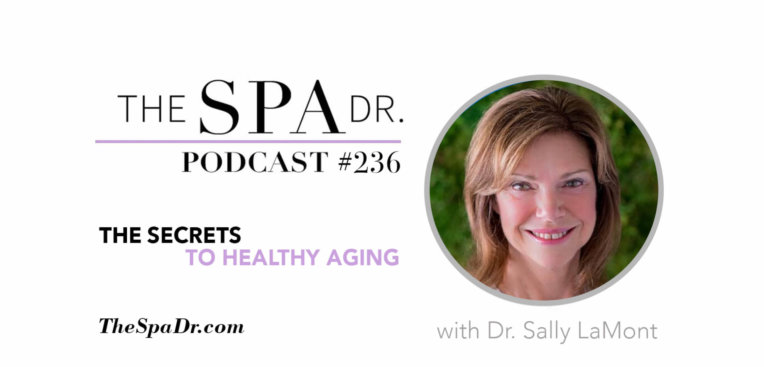
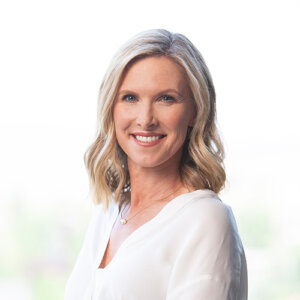
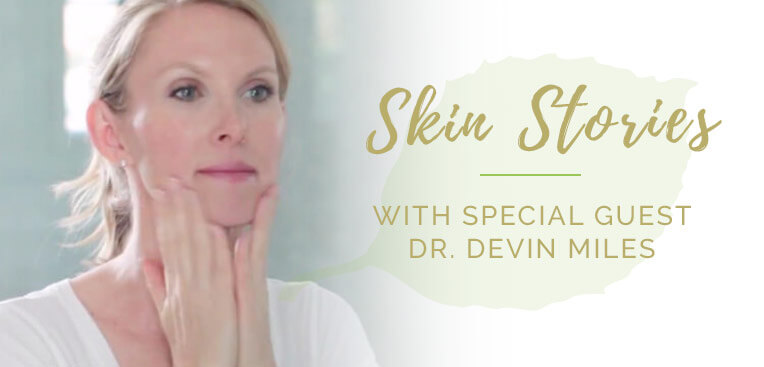
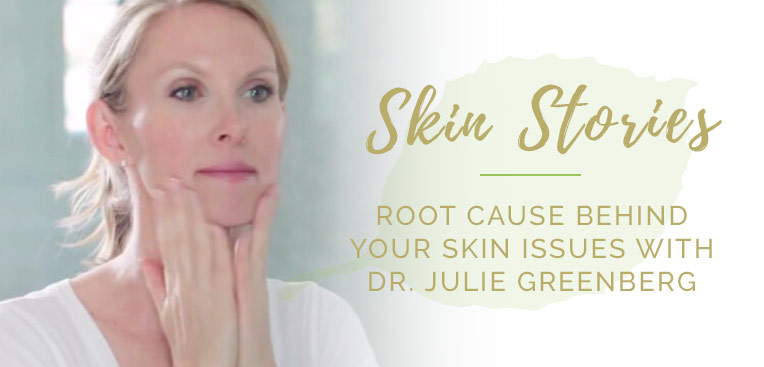

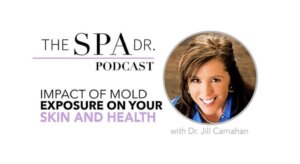
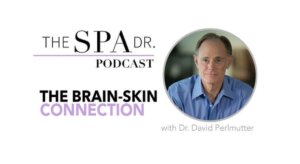
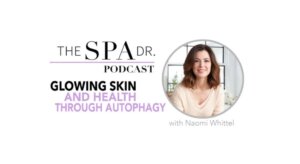
Reader Interactions